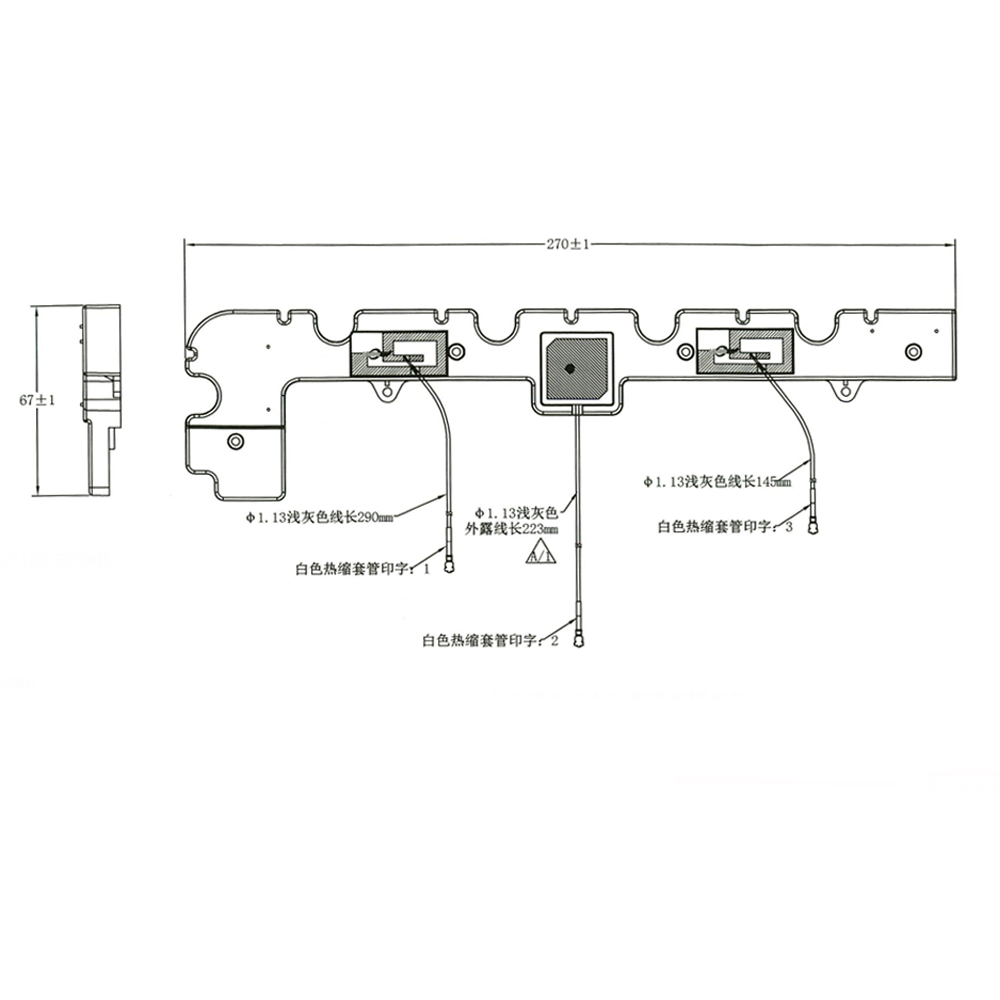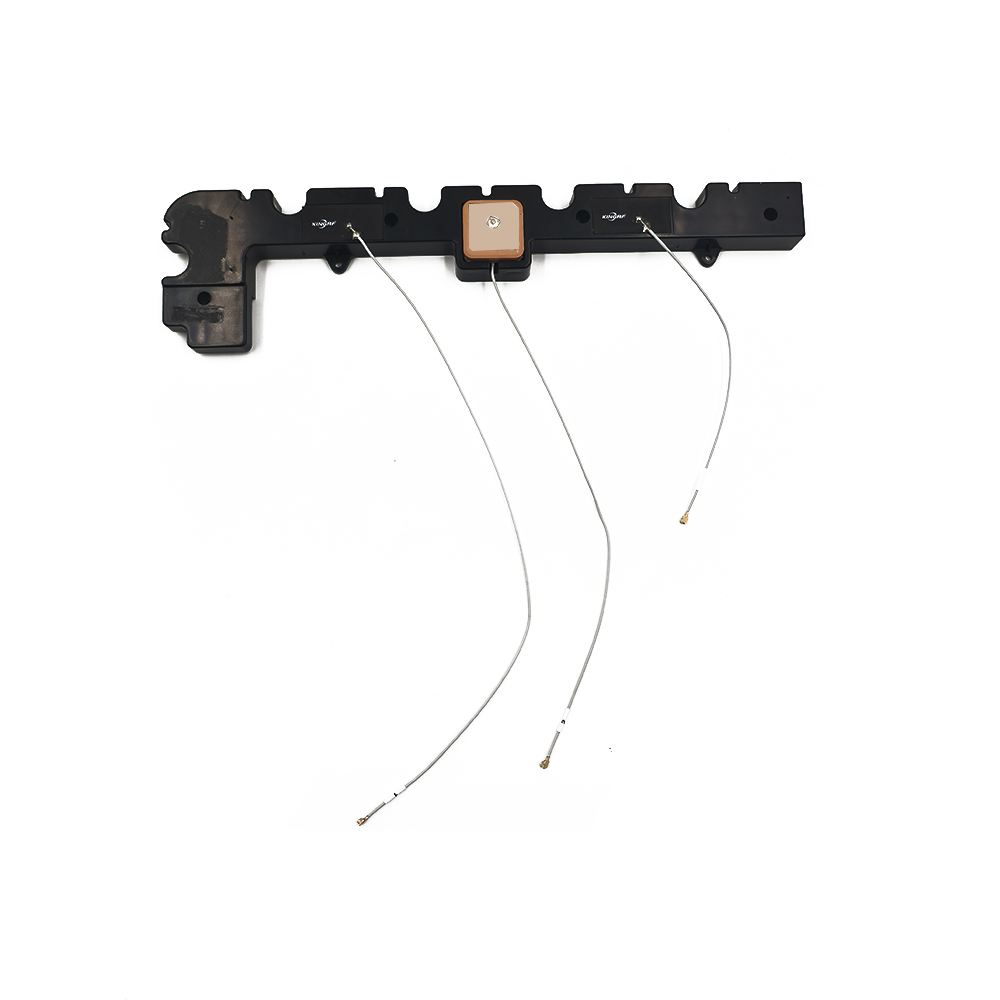The compact GPS Wi-Fi combo antenna module has found its way into a staggering array of devices, becoming the silent workhorse of the connected revolution. Its ability to provide two fundamental wireless services in a simple, miniaturized package has unlocked innovations across consumer, industrial, and enterprise domains. Looking ahead, several key trends will shape its evolution and expand its role.
Current Applications:
Smartphones and Tablets: This is the highest-volume application. The module provides the location for mapping, navigation, geotagging photos, and location-based services, while simultaneously handling all Wi-Fi and often Bluetooth connectivity for high-speed internet access and peripheral connection.
Wearable Technology: Fitness trackers, smartwatches, and GPS sports watches rely on these modules to map runs, cycles, and hikes without requiring a paired smartphone. They use Wi-Fi to sync workout data, download updates, and stream music directly to the device.
Internet of Things (IoT) Devices:
Asset Trackers: Devices attached to pallets, containers, or vehicles use GPS for real-time location and Wi-Fi for data offloading and firmware updates when in range of a known network.
Smart Home Hubs: Hubs that control Zigbee or Z-Wave devices often use GPS for location-based automation (e.g., "arrive home" and "leave home" scenes) and use Wi-Fi as their primary backbone to the internet.
Industrial IoT Gateways: These devices collect data from sensors on a factory floor and use GPS for timestamping and location context, while using Wi-Fi to connect to the corporate network.
Drones and Robotics: Consumer and prosumer drones use the module for basic positioning and hold functionality, and to create a Wi-Fi link for the remote controller and live video feed to a smartphone or tablet. Small robots use it for navigation and communication.
Portable Consumer Electronics: Digital cameras with built-in GPS for geotagging, portable gaming devices, and e-readers all utilize these modules to add connectivity features without adding significant size or design complexity.
Telematics and Automotive Aftermarket: Plug-in dongles for usage-based insurance (UBI) or fleet tracking often use a combo module to get vehicle location and report it via the driver's smartphone Wi-Fi hotspot.
Future Trends:
Support for Newer Standards and More Constellations: Future modules will seamlessly integrate support for:
Wi-Fi 6 and Wi-Fi 6E/7: Offering higher throughput, lower latency, and the new 6 GHz band.
Multi-Band GNSS: Moving beyond basic GPS L1 to include L5, Galileo E1/E5a, and BeiDou signals for higher accuracy and better performance in urban canyons. This will blur the line between consumer and high-precision modules.
Bluetooth Channel Sounding: Future Bluetooth standards may use angle-of-arrival and time-of-flight techniques for ultra-wideband (UWB)-like precision indoor positioning, which could be integrated into these combo modules.
Tighter Integration with Other Technologies: The "combo" will expand. We will see modules that integrate:
Cellular (4G LTE/5G): Creating a single connectivity module that handles GPS, Wi-Fi, Bluetooth, and cellular modem functionality.
UWB: For secure ranging and precise indoor location.
Inertial Measurement Units (IMUs): Sensor fusion within the module itself, providing a fused "position and attitude" output that remains accurate during short GPS outages.
Enhanced AI-Powered Coexistence: Advanced, intelligent coexistence algorithms will become standard. These will use machine learning to dynamically predict and schedule transmission and reception windows, further minimizing the chance of interference and optimizing the performance of both radios in real-time based on usage patterns.
Improved Power Efficiency: For battery-powered IoT devices, every microwatt counts. Future modules will feature more efficient PAs, LNAs, and low-power states that allow the GPS to be periodically powered on for a fix without significantly impacting the device's battery life.
"Antenna as a Service" and Cloud-Based Configuration: Modules might become more software-defined, with the ability to be tuned or reconfigured over-the-air (OTA) for different regions or use cases, allowing for greater flexibility post-deployment.
The trajectory is clear: the combo module will become more capable, more integrated, and more intelligent. It will evolve from a simple connectivity component into a comprehensive "Pervasive Positioning and Connectivity Hub," serving as the primary gateway for devices to understand their location and communicate with the world around them.
Conclusion
The compact GPS Wi-Fi combo antenna module is a quintessential example of engineering innovation driven by market demand. It is a product born from the need to make complex technology simple, reliable, and accessible. By solving the intricate challenge of co-locating two critical yet interfering radio services, it has successfully abstracted away the deep complexities of RF design, packaging them into a single, easy-to-use component.
Its impact cannot be overstated. It has been a key enabler in the miniaturization and proliferation of connected devices, forming the technological backbone of the smartphone revolution and the explosive growth of the IoT. It has democratized advanced functionality, allowing startups and established companies alike to embed robust location and connectivity features into their products without requiring years of specialized expertise. This has accelerated the pace of innovation across countless industries, from consumer electronics to industrial automation.
The module's core value proposition remains its powerful trifecta of advantages: reduced development risk, accelerated time-to-market, and space savings. While it does involve trade-offs in ultimate performance and unit cost, this compromise is not only acceptable but desirable for the vast majority of applications where good, reliable performance is sufficient, and speed of development is paramount.
Looking forward, the role of the combo module is set to become even more central. As we move towards a world of ubiquitous computing—where every device, from the mundane to the sophisticated, is smart and connected—the demand for simple, integrated, and multi-functional wireless solutions will only intensify. The module will continue to evolve, absorbing more technologies like 5G, UWB, and advanced GNSS, transforming from a combo module into a universal connectivity engine.
In conclusion, the compact GPS Wi-Fi combo antenna module is far more than just a component. It is a strategic tool that empowers innovation. It is the unsung hero that quietly and reliably provides two of the most fundamental senses of a modern smart device: the sense of place and the sense of connection. By doing so, it has firmly established itself as an indispensable building block for the connected present and the autonomous future.




































































 Language
Language
 En
En Cn
Cn Korean
Korean

 Home >
Home > 







 18665803017 (Macro)
18665803017 (Macro)













